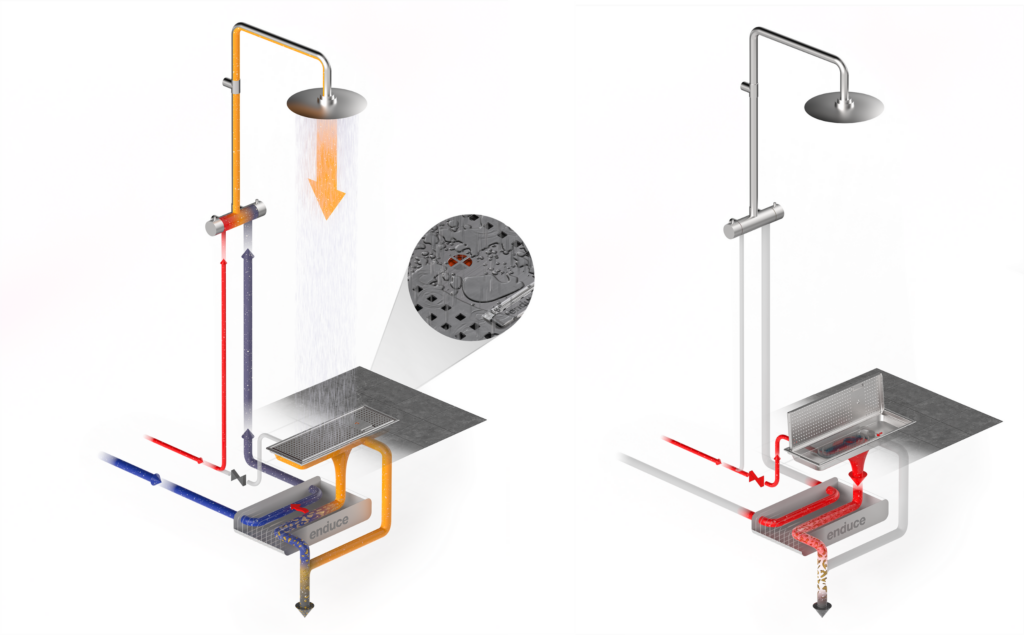Reducing energy use at the application level, through energy recovery directly in the shower area, is according to independent studies the most effective way to save energy and reduce the power demand for hot water heating.
According to the Swedish National Board of Housing, Building and Planning's building regulations, the contribution of energy-saving technologies to improving energy performance may be included in the calculations based on the technology's demonstrated energy savings. Enduce E1 energy recovery rate of 71-75 % is verified by RISE (2022). The test report is available under Document in the main menu.
In the Swedish National Board of Housing, Building and Planning's regulations BFS 2027:6 (Swedish National Board of Housing, Building and Planning's regulations amending its regulations and general advice (2016:12) on the determination of the building's energy use during normal use and a normal year), the following wording is given in Table 2:2:
"Energy for domestic hot water according to Table 2:1 and Table 2:2 may be corrected for installation techniques that can be demonstrated to save energy for domestic hot water."
This opens up the possibility to include heat recovery in different ways, according to the text of the general advice. However, the domestic hot water energy in the tables shall always be the same, i.e. 20 kWh/m2 Atemp and year for single-family houses and 25 kWh/m2 Atemp and year for multi-family houses. It is the energy input for domestic hot water production that shall be calculated taking into account heat recovery in this case.
Source: The potential of waste-water heat recovery systems, Passive House Institute, 2022; City-wide model-based analysis of heat recovery from wastewater using an uncertainty-based approach, Lund University, RISE, 2022; Swedish National Board of Housing, Building and Planning regulations BFS 2027:6, Swedish National Board of Housing, Building and Planning regulations on amendment of the Board's regulations and general advice 2016:12.

